August 18, 2022
Rain – lots of it – was in the forecast for the next few days so we took advantage of the Wi-Fi before checking out to make some plans for the coming days.
Plans, did I say? I should have said intentions. Plans can change from outside forces but we can still have intentions, which are far more nebulous and, by their definition, include the ability to change. We learned long ago to be flexible while traveling and the ability has served us well.
And though the forecast was for rain with more rain and then rain, we didn’t drive 3,500 miles just to let weather stop us, so we left Anchorage for the 225-mile journey south to Homer, on the Kenai Peninsula. Once we cleared the light traffic of Anchorage, the views driving along Turnagain Arm and Cook Inlet were stunning, even through the clouds. Glaciers lined the mountains across the water and the rain added to the mystery. It was wet everywhere we looked – even rock formations next to the road oozed waterfalls. Sadly, it was too wet to capture many photos.
Four hours later, we arrived in Homer, a town of about 5,000 on Kachemak Bay. After walking from the truck through squishy grass and mud, we checked into the very last available cabin in town, which Susan somehow had found, and cranked up the heat. The cabin had an impressive view overlooking the bay with a backdrop of glacier-topped mountains only a couple of miles away.
After settling in, we took a short drive to Homer Spit, which near its end is lined with some restaurants and shops. A few local people were walking around in the rain as if it were a clear sky. Homer has a temperate rain forest climate and gets a lot of rain and an average of six feet of snow a year. We walked around the spit for a while wearing our rain coats and our Seattle Sombreros (Gore-Tex rain hats) but most places were already closed for the evening. After watching the gulls for awhile near a fish processing plant at the end of the spit, we headed back to the cozy cabin.
But we had a problem. Or I should say, the truck did. Several times on the way back to the cabin, while accelerating from a stop, the electronic stability control engaged, cutting the engine’s power and leaving us rolling slowly through the middle of an intersection. I had a feeling the very rough parts of the Alcan coupled with constant rain had done a number on one of more wheel speed sensors.
Unfortunately, the ground was wet and muddy at the cabin and we were not in a place I could work on the truck myself, even if I had the tools needed. We’d have to pray a local mechanic could fit us in the next day, a Friday. There was nothing we could do until then so we had a camp dinner in our cabin and watched the clouds and rain play in the mountains across the bay.
By 10 pm it was still light enough outside to read. All day it had been about 50 degrees and wet and it looked like our “plans” to take a glacier cruise the next day might not happen, especially since the wind was forecast to increase. If for some reason we couldn’t get the truck repaired quickly, we had another problem. Every room or cabin in town was full for the upcoming weekend and because we usually sleep in the truck and it might be sitting at a shop over the weekend, we faced a real challenge.

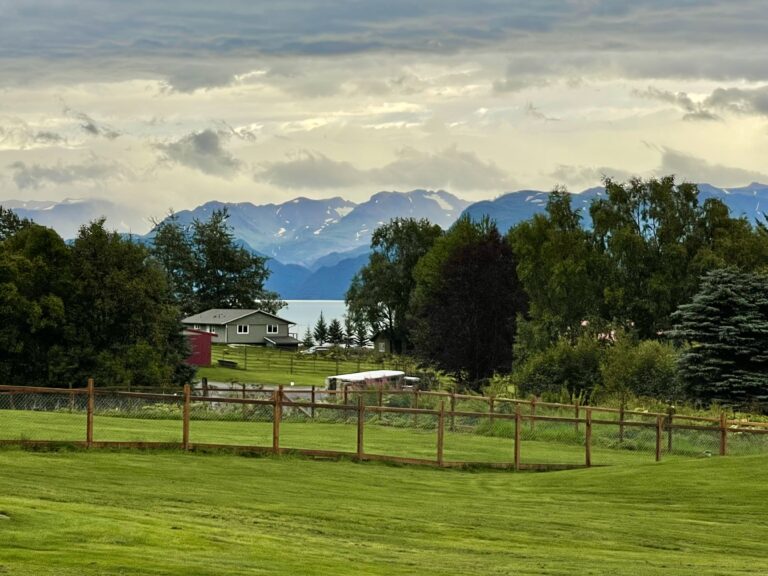
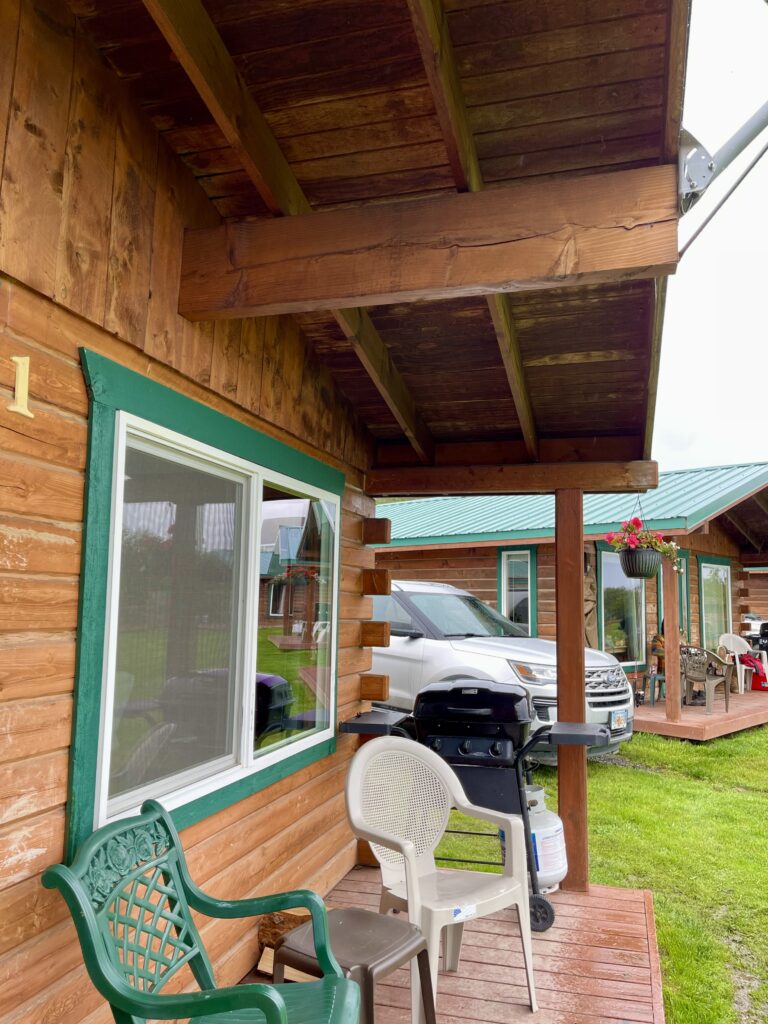
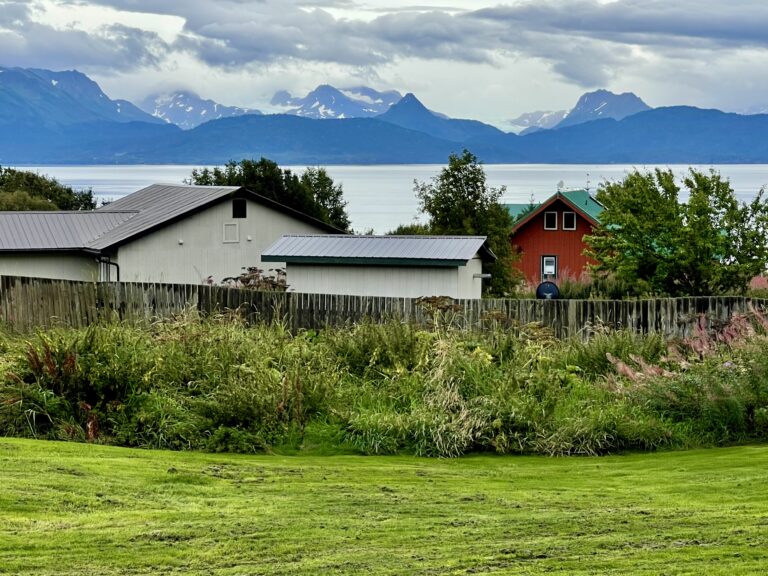
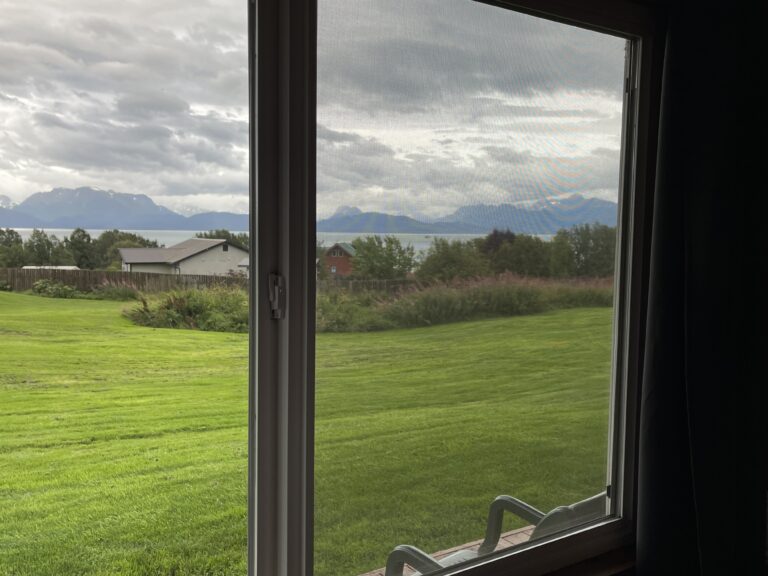
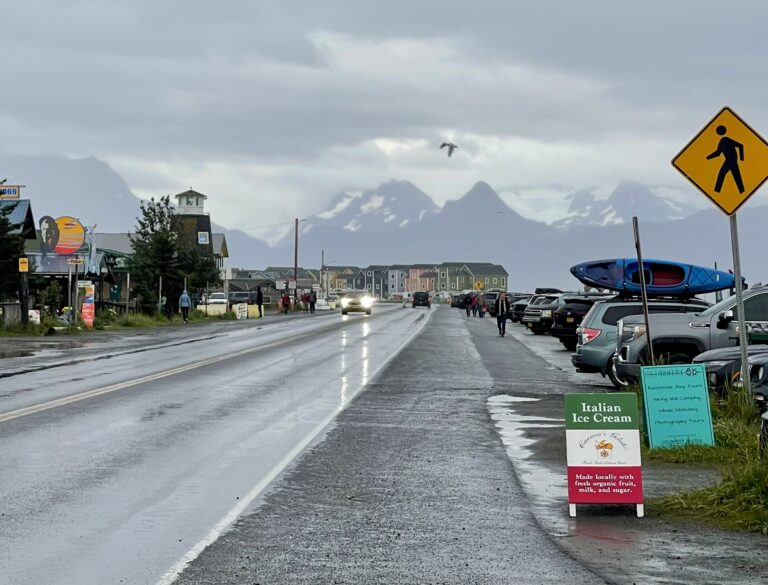
One Response
The light is beautiful. Glaciers rock!